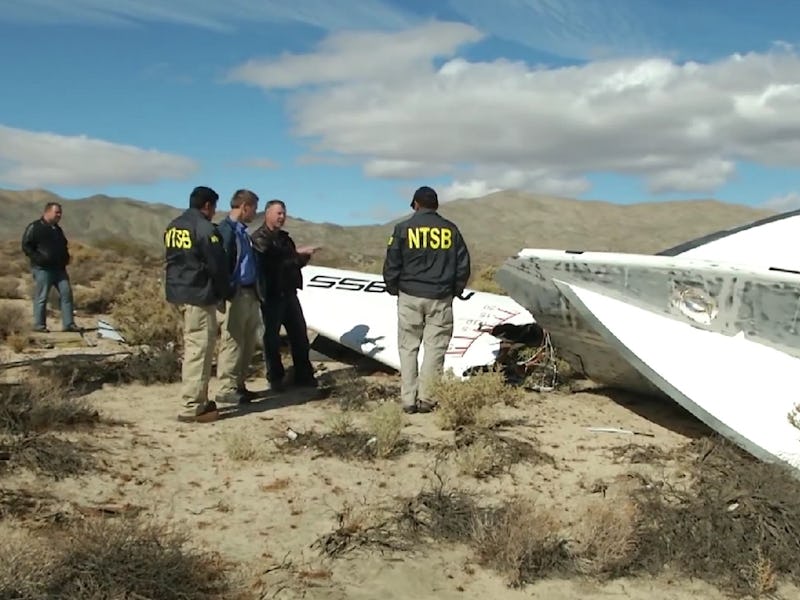Pilot Error Led to Virgin Galactic's Fatal SpaceShipTwo Crash: NTSB Investigation
The complex perils of crossing the Mach 1 threshold.

The crash of Virgin Galactic’s flagship SpaceShipTwo happened way back last October — yet we’re finally starting to get some answers as to the cause. In an article I wrote for IEEE Spectrum last year, I talked about why the crash likely had to do with a premature deployment of the craft’s re-entry system. Turns out that hypothesis was pretty much right-on.
Investigators from the National Transportation Safety Board (NTSB), having finally wrapped their investigation, announced Tuesday that the crash was due to co-pilot Michael Alsbury’s unlocking of the plane’s “feather” system while the spacecraft was in Mach 1.0 instead of Mach 1.4. The result caused SpaceShipTwo to blow up in the air just two seconds later. The two-pilot, six-passenger, made-for-tourism plane broke up across the Mojave Desert, with various pieces of debris flung over a five-mile track near Koehn Lake. Alsbury died in the crash; the second pilot, the only other person on board, survived.
SpaceShipTwo’s feather system is a novel feature developed by Virgin Galactic. It’s meant to slow the spacecraft during a descent to Earth by pivoting the two tails from a “de-feathered,” straight configuration, into an upright, vertical configuration to create drag.
But Mach 1 is a dangerous environment, and the smallest changes can be catastrophic. Mach 1 is a speed that varies based on altitude, as it’s the ratio of an object’s speed to the speed of sound in a given environment. (Lower-density air leads to slower sound and thus slower Mach 1 speeds.) In breaking the sound barrier you experience a huge initial shockwave that disrupts smooth movement of the wings through the air, making any actions between Mach 0.8 and 1.2 highly unpredictable.
SpaceShipTwo in better times.
A pilot’s goal is to move out of that threshold as fast as possible. That’s why you don’t want to do anything that, say, moves the wings around until you’ve sped up well past it. NTSB investigators found that Alsbury began initiated deployment of the feather system at Mach 0.8.
The NTSB says the feather system shouldn’t have been unlocked at any point before Mach 1.8.
The board didn’t lay much of the blame at aerospace company Scaled Composites, which built the craft and failed to adequately illustrate the risks of deploying the feather system too early. In the months since the crash, the company and Virgin Galactic have worked to develop an inhibitor that would prevent early unlocking of the feather system.
The findings come soon after SpaceX announced that its June 28 Falcon 9 rocket explosion was caused by a single faulty strut.
Neither these nor future crashes will nix commercial spaceflight. But Virgin Galactic, SpaceX, and other companies are at constant peril of overlooking a tiny detail — or experiencing a seemingly tiny error in midflight — that can lead to disaster. Events like these can erode the public’s confidence and optimism, and these will be hard to repair if we don’t see a steady record of safe, uneventful schleps to space.